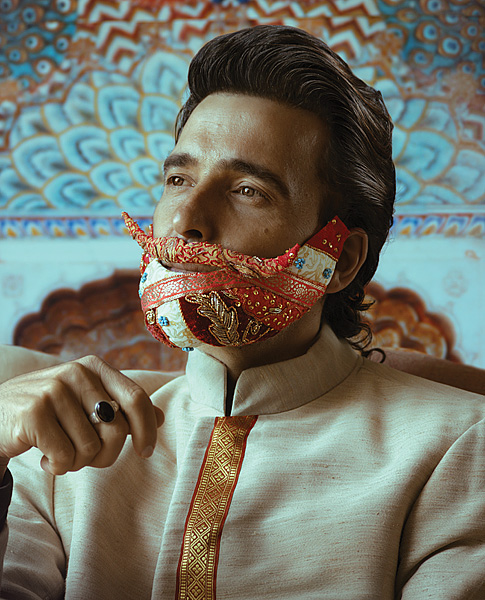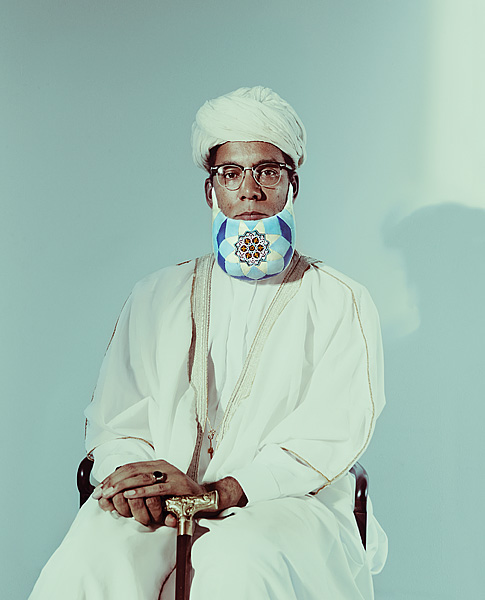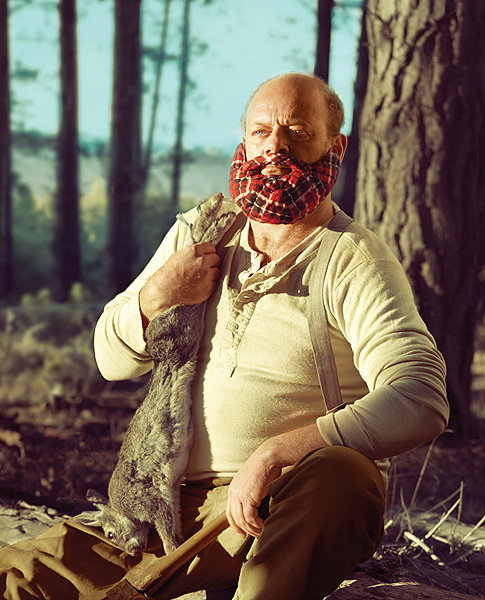29\02\2012
Written by Jurriaan

The Postiche: faux facial hair

THE MA’ARAKATT AL RAHMAN MERKHET
‘The oldest and most precious of the collection, the first threads of his venerable example can be traced back to the mid 19th century and the province of Biskra in the North Eastern reaches of Algeria.’
“After many years of intense research and diligent attention to detail Julian Wolkenstein and Paul Sharp introduce you to the fascinating and stimulating world of postichery. Combining rare original postiche with meticulous replicas created by technical adviser Tamara Maynes, we are given, for the first time, a wholly unique insight into this previously undiscovered sector of Gender Studies.”
The ‘postiche’, a patchwork or quilted beard is often handed down through generations. The ‘historical findings’ with reference to the six beards are presented in a faux exhibition catalogue at the non-existing Museum of Helsinki. A delightful history of the each beard can be read here. Excerpts can be found below.
EYAH-KUSADVHA DUNAKI DAARDHI
‘”The Beard of a Thousand Promises” (approximate translation) exquisitely combines the darker reds of Gujarat’s vedic tradition with the warmer tones representing Ganesha the Elephant God (Lord of the Beginnings); the extended moustaches cunningly hinling at the deity’s trunk reaching to both the East and West in delightful simultaneity.’

The Laramie Postiche
‘Crafted during the late 1860s, the Postische was a standard, a self-proclaimed “rally calll to the Mountain Men and Free Trappers of the Pacific Northwest,” by one James Edgar Laramie or “Furry Jack” as he later became known.’

The Cernunnos postiche
‘One of the more recent artifacts in the collection, the Cernunnos Postische (or “Póg mo Thóin na Crom Cruach” in the appropriate Celtish form) was created in the late 1960s. Influenced by a combination of pagan revivalism and early druid designs dating back to the late Iron Age, the postiche was handcrafted by the late Lady Joan Bigrave (1907-1987) as a fertility gift for her beloved son and only child Jasper, a local hippie advocate, community gardener and keen naturist.’

The Belgorod Boroda
‘According to the journals of Russian politician and only known bearer of the postiche, Nikolai Dazbog (1934-1987), the Belgorod Boroda was first craften in 1917 as a gift from the Belgorod Women’s Socialist Alliance to Alexander Kerensky the Revolutionary Leader, who later became first Minister of Justice in the provisional government.’

The Eadaraig Vestment
‘Originating from the remote town of Ettrick in the Scottish Borderlands, the Eadaraig Vestment was first owned by the then Deacon of Ettrick Kirk, Robert Laidlaw. A fiercely presbyterian minister, Laidlaw passed on not only his austere theologies to his son William, but also a beautifully crafted pastiche, fashioned to his exacting specifications by his late wife Beatrice Laidlaw, 1837-1872.’
